- Simplifying AI
- Posts
- 💼 ChatGPT company knowledge
💼 ChatGPT company knowledge
PLUS: How to build and deploy a complete backend using simple natural language input

Good morning, AI enthusiast. OpenAI just made ChatGPT better at handling your work and school data with a new “company knowledge” update.
In today’s AI newsletter:
How to build and deploy a complete backend in minutes
ChatGPT Can Now Search Your Work and School Data
Scientists Create Retina E-Paper That Matches Human Vision
AI tools & more

HOW TO AI
🎨 How to build and deploy a complete backend in minutes
In this tutorial, you will learn how to use Chef, the open-source AI backend generator, to instantly create and deploy a complete backend for your app right from the browser, without relying on Firebase, Supabase, or any external services.
🧰 Who is This For
Indie developers building prototypes fast
Engineers who want complete control over data
Startups validating MVPs without vendor lock-in
Anyone learning backend architecture
STEP 1: Go to Chef
When you open Chef’s main page, you’ll see a large text box in the center that says something like:
“What app do you want to serve?”
Just type exactly what kind of app you want.
For example;
Build an app similar to Slack with the following features: Build an app similar to Slack with the following features:
- Has a channels panel on the left with a button to create new channels
- Has a message pane on the right and a message posting box at the bottom
- Each message has a name and avatar next to it for the author
- Has an "edit profile" tab for uploading a profile photo to Convex storage and changing your name
- Only the messages are scrollable, with message box and channel selector fixed like the header
- Automatically scrolls to the bottom when new messages are sent
- Includes a search bar at the top that queries all messagesThen click the ➜ button on the right side of the text box.
Chef will read your description and instantly begin generating your backend structure.
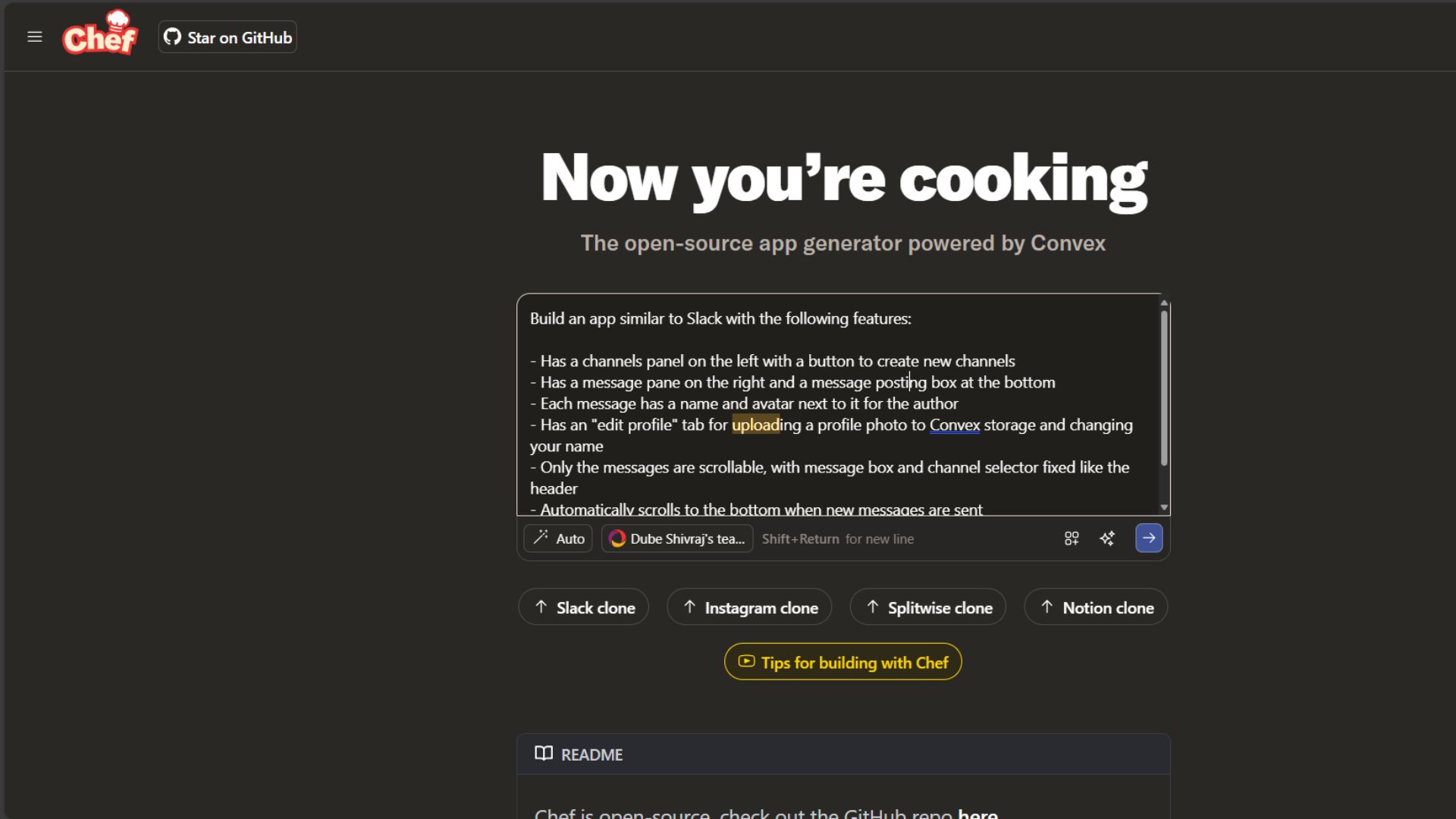
STEP 2: Follow the Guided Setup
After you submit your idea, Chef will take you into a guided “recipe” layout, basically a checklist of what’s being built for your app. It will show sections like database setup, messaging logic, or user accounts.
Each time Chef finishes a part, you’ll see a green check mark.
You don’t need to do anything but click “Continue” or wait while it completes steps for you.
Once all steps are complete, Chef automatically opens your working backend inside the builder.
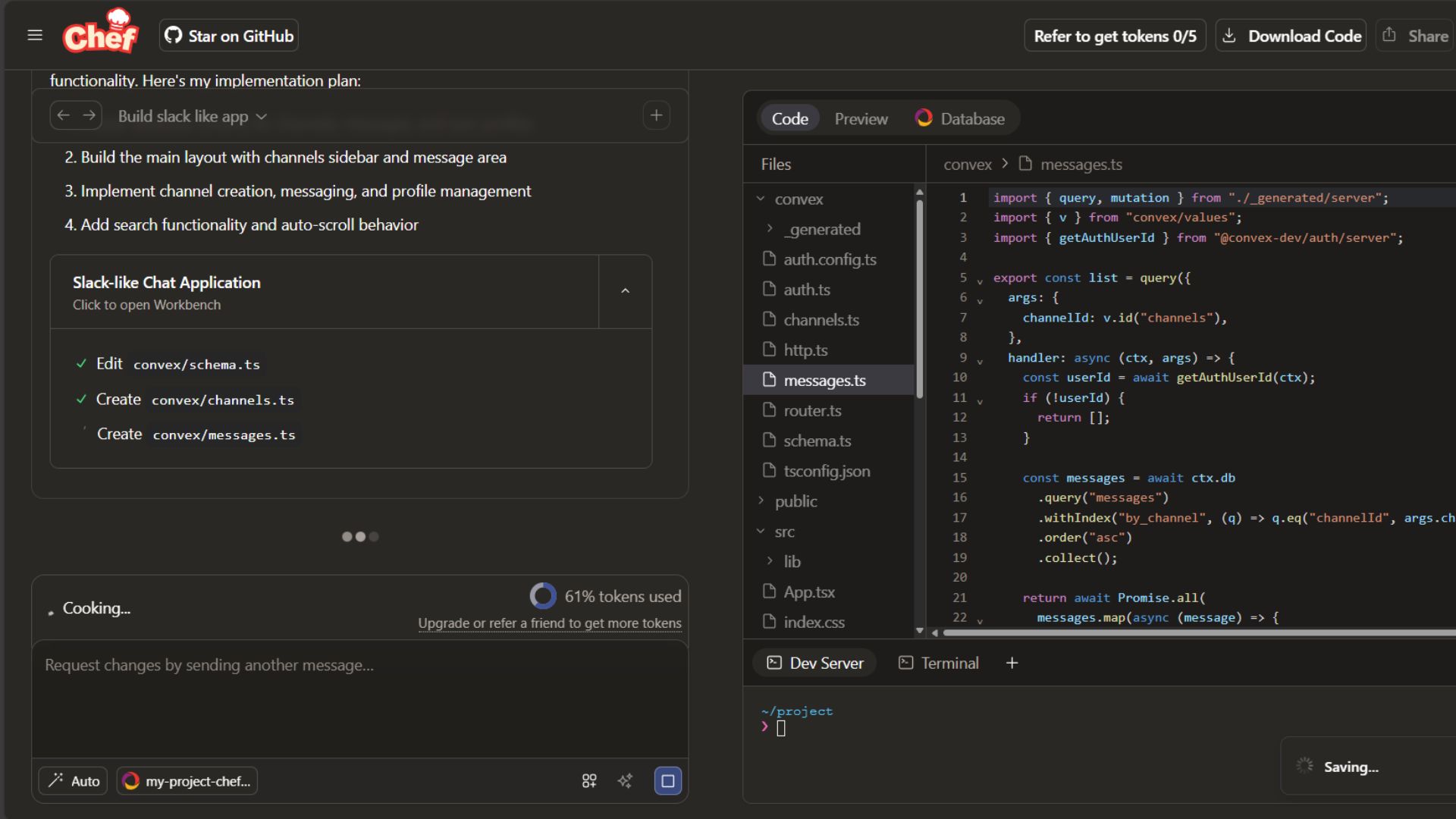
STEP 3: Preview Your Backend Online
Your code and database are now live inside Chef.
You’ll see:
• A file system with all backend files already created
• A preview panel to interact with features (like sending messages or creating channels)
• A sidebar that shows your app’s progress and capabilities
You can test the backend right there, adding sample data, trying actions, and seeing results instantly
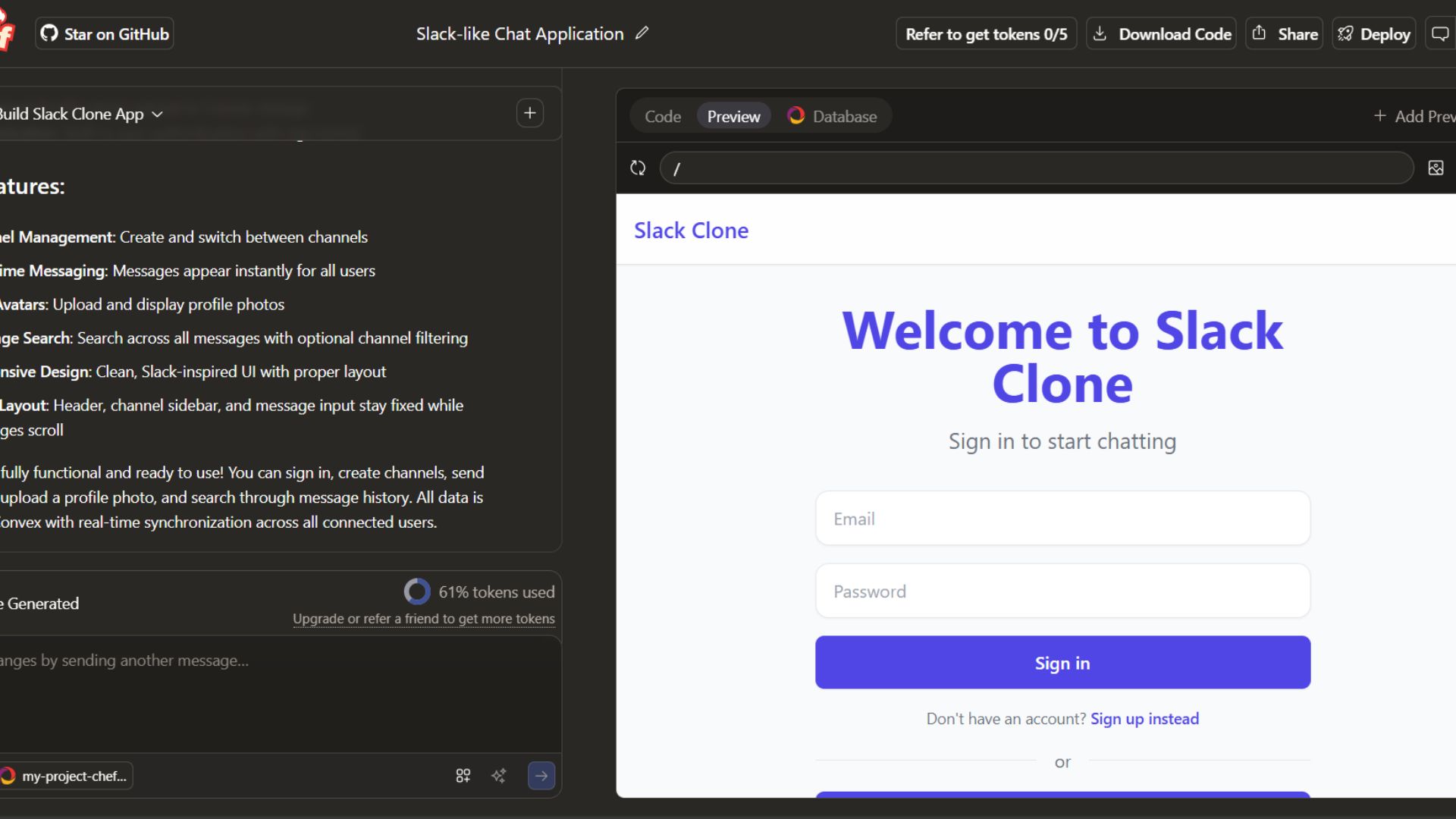
STEP 4: Deploy With a Single Click
At the top right of the screen, you’ll find a Deploy button.
Click it once, and Chef publishes your backend online automatically.
After deployment, Chef gives you:
• A live backend URL
• Ready-to-use API endpoints
• Authentication already enabled
Now you can connect this backend to any frontend, mobile app, React app, anything, and it will work immediately.

AI TOOLS
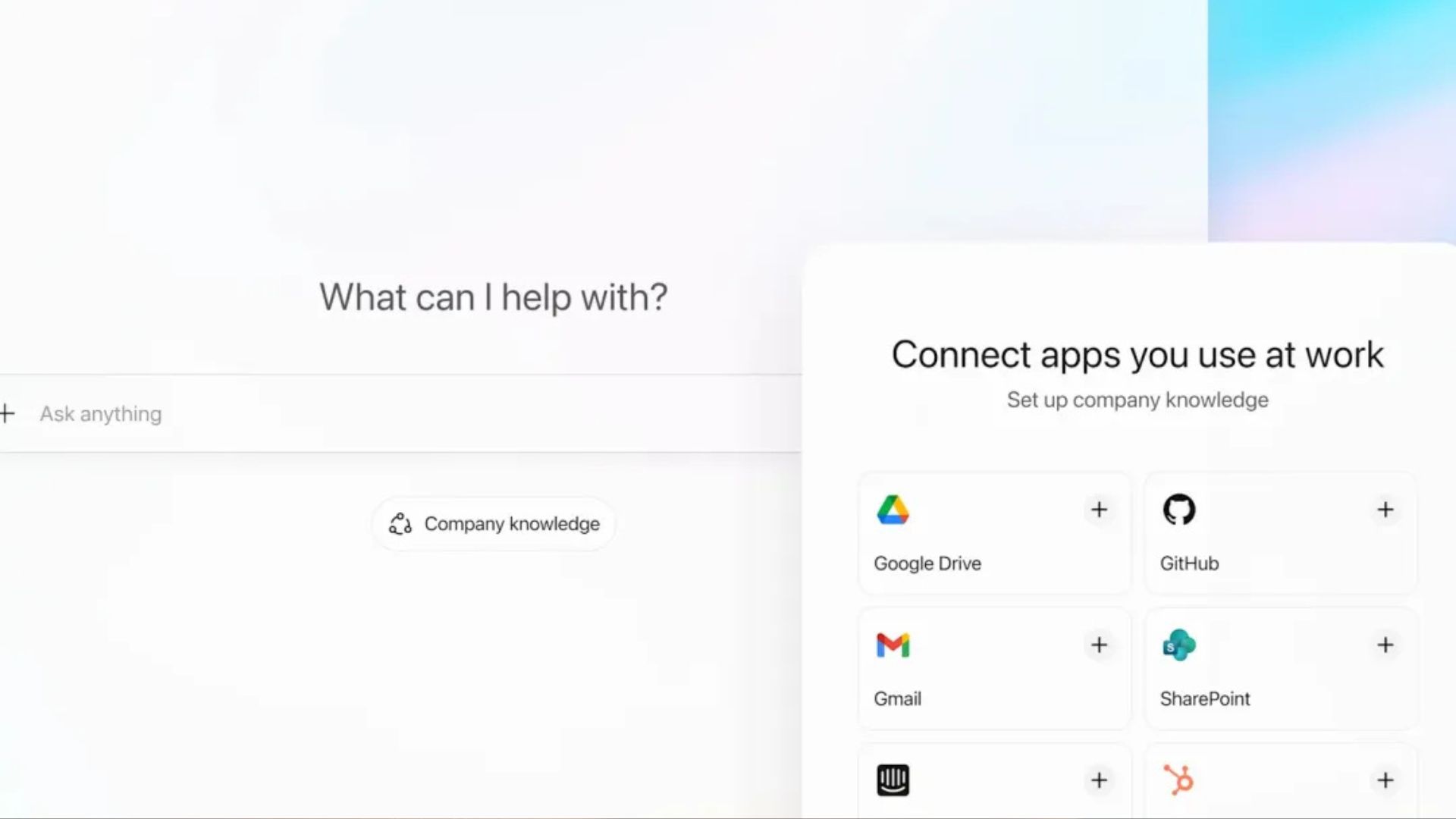
The “company knowledge” update connects ChatGPT to apps like Slack, SharePoint, Google Drive, and GitHub, allowing it to act as a conversational search engine for workspace information.
GPT‑5 scans multiple sources simultaneously to give accurate, cited answers
Handles ambiguous questions and resolves conflicting info
Creates briefings from emails, messages, docs, and support tickets
Must be manually activated and can’t create charts or search the web while on

This feature turns ChatGPT into a trusted assistant for work and study, cutting down on app-switching and helping users get comprehensive answers from all their connected workspace tools.
AI NEWS
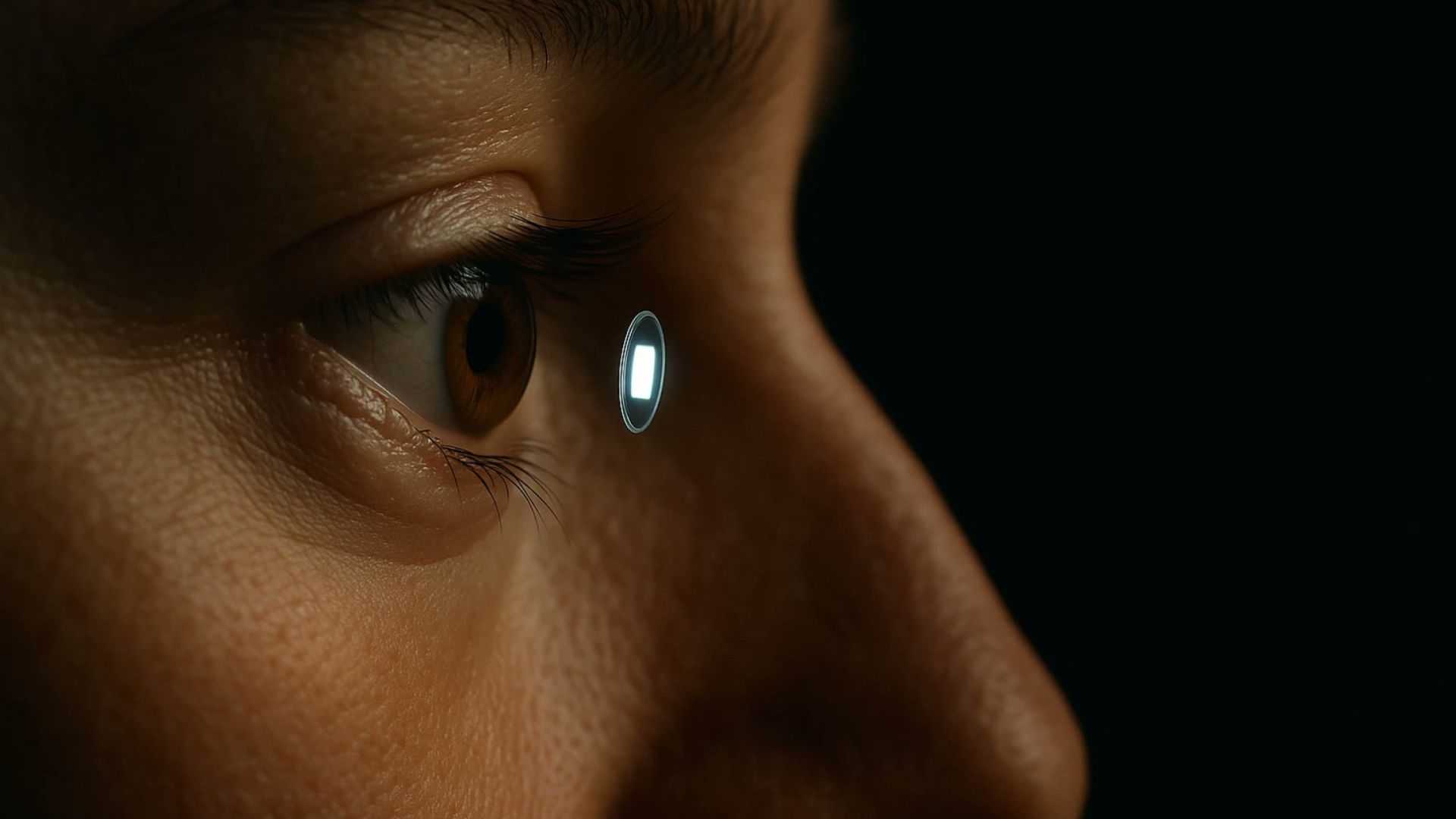
Scientists in Sweden have developed retina E-paper, a groundbreaking display with 25,000 pixels per inch, matching the resolution of the human eye. This could redefine screens across smartphones, VR headsets, and future wearable displays.
Pixel density so high each pixel = size of a human photoreceptor
Reflective screen tech means ultra-low power + reduced eye strain
Colors stay visible even after power is off (“color memory”)
Demonstrated lifelike art and even 3D illusions with eye-specific color channels
Ideal for VR/AR: realistic visuals, tiny screen size, near-zero battery drain

For the first time, display tech has surpassed what the human eye can naturally perceive, unlocking a future where digital visuals feel indistinguishable from reality. From immersive collaboration to sustainable screens, retina E-paper could power the next generation of virtual worlds.

Microsoft plans to bring its Halo franchise to the PlayStation for the first time with the launch of a 25th‑anniversary remake of Halo: Combat Evolved in 2026.
Oreo maker Mondelez has spent $40M+ on an AI tool, developed with Publicis and Accenture, to cut costs for the production of marketing content by 30% to 50%.
Tether CEO Paolo Ardoino says the company expects to earn close to $15B in profit in 2025, up from around $13B in 2024.
IBM says its quantum computing work with AMD is paying off. They can now run an important error-correcting algorithm on AMD’s affordable field-programmable gate array (FPGA) chip.

📚 PokeeResearch: Open-source 7B AI research agent
📹️ Supercut: Just record your screen, share instantly and look professional.
🤖 Manus 1.5: Smarter agent with faster tasks, better coding, and more

THAT’S IT FOR TODAY
Thanks for making it to the end! I put my heart into every email I send, I hope you are enjoying it. Let me know your thoughts so I can make the next one even better!
See you tomorrow :)
- Dr. Alvaro Cintas